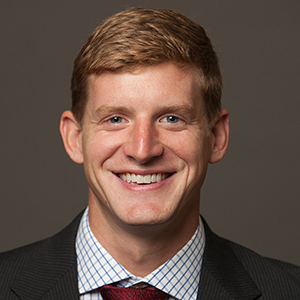Finding Balance

by Rob Brink, MBA ’16 and Environmental Finance and Impact Investing Fellow

Rob Brink, MBA ’16 talks about walking the career tightrope between knowledge and practice, passion and process, old business models and innovation, and work-life and personal-life.
My internship this summer with GE has been all aboutbalance. How to balance knowledge with practice, passion with process, oldbusiness models with new, large corporations with innovation, and work-lifewith personal-life. Each of these forcestug in different ways. At times the direction is clear and strong; often it isvague and subtle. Johnson, and theSustainable Global Enterprise (SGE) Immersion specifically, has given me theknowledge and confidence to walk this career tightrope.
By way of background, I am working in GE’sRenewable Energy Leadership Program this summer. GE Renewables is one ofthe largest renewable energy companies in the world. It is primarily focused onmanufacturing wind turbines, with smaller ventures in solar photovoltaics and energystorage (aka batteries). My summer project is focused on energy storage, anascent market with huge potential growth but limited track record andsignificant regulatory and market-design risks.
Balancing knowledge with practice. In the first few weeks of my internship I’veused regression modeling and decision-tree analysis from our class on dataanalytics, innovation frameworks from our SGE Immersion, and NPV calculationsfrom our finance class. If the measure of a business school is how narrow thegap between theory and practice are, Johnson passes with flying colors. Thetranslation from concept into practice hasn’t been perfectly smooth, but by farit’s been the easiest part of my project.
Balancing passion with process. I “believe” in climatechange, or to put it more accurately: I believe in science. I feel what I’mdoing is important and exciting. But business-savvy has no room for exuberance.Not every clean tech investment is a good idea, or a profitable one. My projectthis summer has allowed me to do in-depth analysis on energy storageopportunities I think are interesting, but that I ultimately have to recommendagainst based on the numbers. At timesthat can be a hard pill to swallow, but the SGE Immersion covered this issue ingreat detail.
Balancing old business models with new ones. The energyindustry is moving from centralized generation to distributed, frommonopolistic to competitive, from archaic to technology-dependent, from fixed-demandto flexible. Energy storage encompasses all of these trends. Understanding how to succeed in such adynamic space while taking measurable risks has been a challenging task for GEgenerally. The frameworks we used in our immersion help me navigate thosedifficult decisions.
Balancing a large corporate environment with innovation.Let’s be honest: GE is not known for its highly innovative culture. Ideas haveto percolate up the chain, be able to impact its already-large bottom line, andhave near-term profitability. That makes recommending new business models orunusual opportunities a challenge. The company has taken steps to change this.It is interesting to see how it tries to maintain its conservative appeal toinvestors while looking to future innovation. My SGE project with ConEdison wasincredibly helpful in preparing me to tackle these issues.
Balancing work-life with personal-life. GE embraces the ideaof a “work-life” balance. Everyone leaves at 5pm, weekends are sacrosanct, andgroup lunch is encouraged. As an endurance athlete this is perfect; it gives methe time I need to train for races. And yet I love the work I’m doing, and feeldrawn towards it constantly. When and how much to dive into my project is acontinuously moving target. Business school generally has helped me test wheremy limits and priorities are.
Johnson has given me tools and experience to approach eachof these balancing acts. My experience in the Sustainable Global Enterprise Immersionnot only prepared me with industry knowledge, but also with an understanding ofhow business and sustainability can fit together and where the friction pointsare. I see and use this knowledge every day at GE, and I believe it will helpme find that balance in my future career as well.
